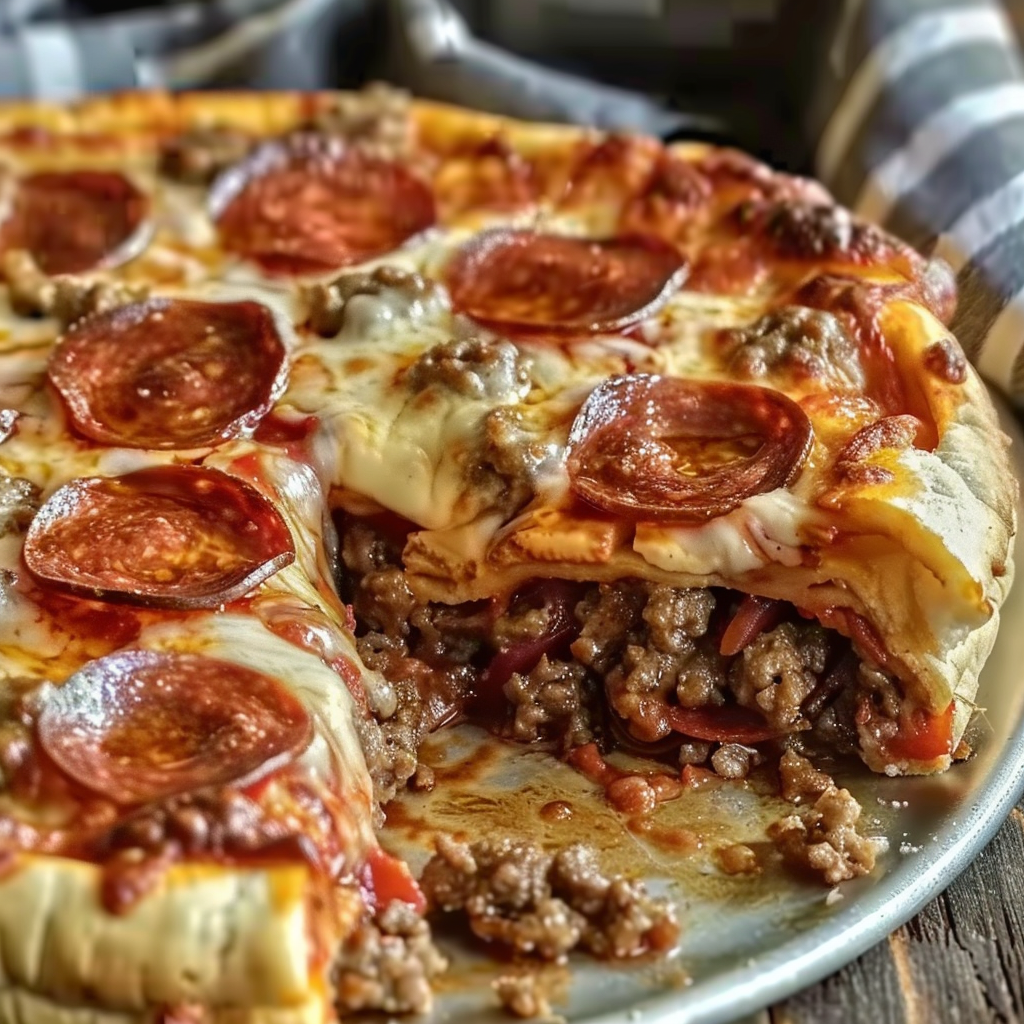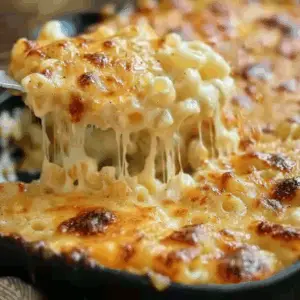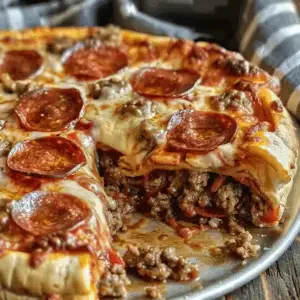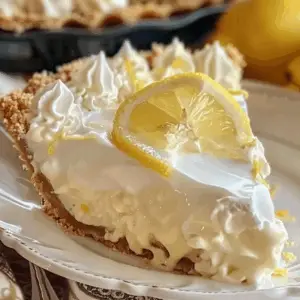The Complete Guide to a Stuffed Pizza Pie with Layers (Ultimate Cheesy Deep Dish Recipe)
There’s something irresistible about a deep dish pizza pie. Unlike the thinner, flat-crust pizzas most of us are used to, this style transforms pizza into a towering stuffed pie, packed with layers of cheese, savory fillings, and a golden crust. The result is a hearty, shareable dish that feels as comforting as it does indulgent.
The roots of this dish connect back to Chicago-style pizza history, where bakers created a buttery crust strong enough to hold multiple layers of toppings and a thick cap of tomato sauce. Over time, variations evolved—including the stuffed pizza, which adds a second crust beneath the sauce. This guide will help you understand the defining elements of both while showing you how to master a reliable recipe at home.
A true deep dish pie isn’t just about piling on cheese or sauce. The art lies in balancing moisture, building structured layers, and letting the crust achieve that golden crisp through the Maillard reaction. To do it well, you need the right tools, a good understanding of dough, and some technique when stacking ingredients. In later sections, you’ll also find inspiration boards such as this deep dish pizza Pinterest collection for presentation ideas, plus tips on variations like spinach-ricotta or meat-lovers’ versions.
By the end of this complete guide, you’ll not only have a foolproof recipe but also the knowledge to troubleshoot soggy crusts, experiment with fillings, and serve a pie that slices clean and tall. Before we dive into tools and techniques, let’s clarify exactly what makes a deep dish pizza different from its cousin, the stuffed version.
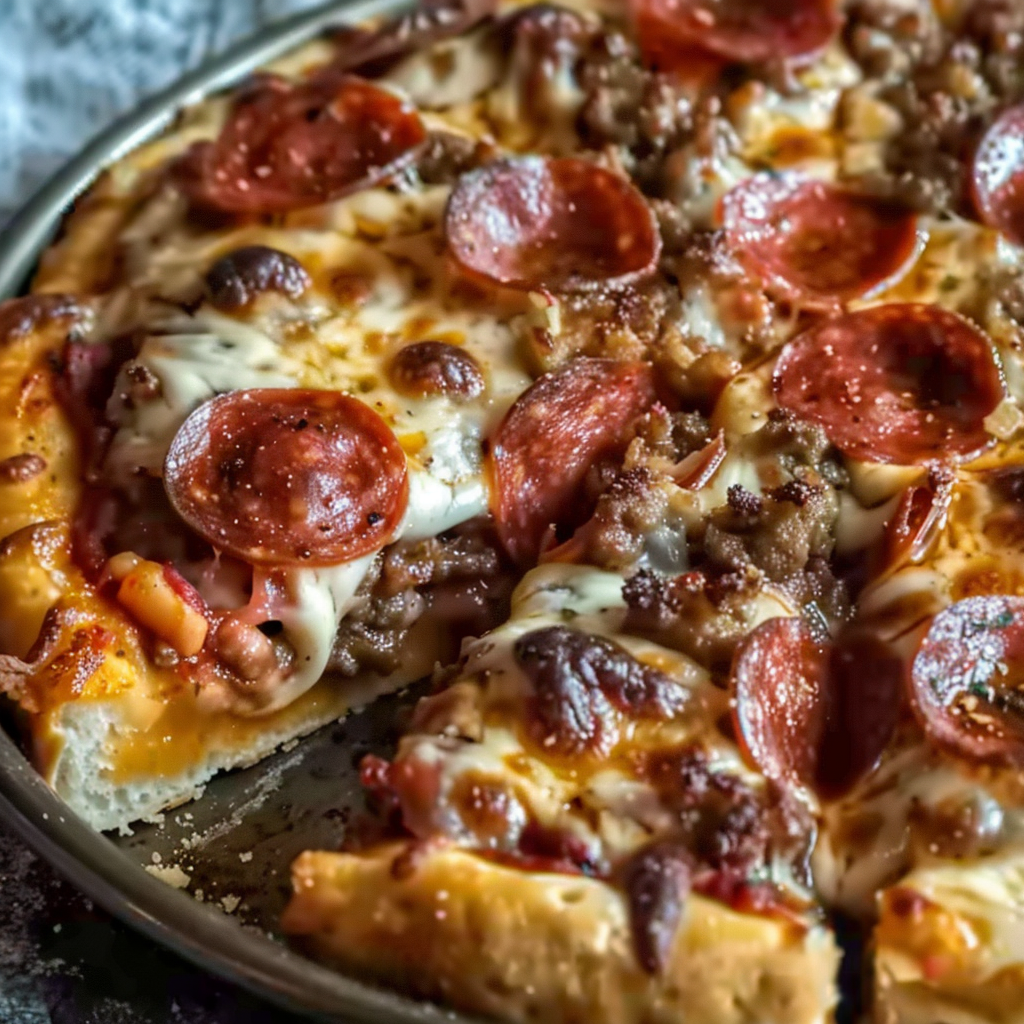
What Is Deep Dish vs. Stuffed Pizza?
When people talk about deep dish pizza, they often use the term interchangeably with stuffed pizza, but the two are not quite the same. A classic deep dish begins with a tall, buttery crust that lines the bottom and sides of the pan, forming a sturdy shell. The cheese goes down first, followed by meat or vegetables, and then a thick layer of sauce spread over the top. This unique structure protects the crust and creates that iconic pie-like look.
Stuffed pizza, on the other hand, takes things a step further. After layering cheese, fillings, and sauce inside the crust, an additional thin sheet of dough is placed over the top. That second crust is then sealed around the edges, and sauce is spooned over it before baking. This double-crust method produces a pie that’s even taller and denser, almost like a hybrid between pizza and lasagna. The second crust helps hold in moisture, but it also requires careful sealing to prevent leaks while baking.
Both styles owe their existence to Chicago’s innovation, where pizza was reimagined not as a flatbread but as a hearty stuffed pie. Today, the debate continues over which style is superior. Fans of traditional deep dish love the open top and cheese-forward structure, while stuffed pizza enthusiasts appreciate the rich, layered feel of a double crust. Whichever you prefer, both share the same DNA: indulgent layers, molten cheese, and a crust capable of standing tall.
If you want to dig deeper into the cheese science behind these pies, you’ll find that low-moisture mozzarella plays a critical role in getting the gooey, stretchy melt without watering down the crust. Similarly, finishing with aged Parmesan cheese adds sharpness that balances the richness. Together, these elements define the heart of a deep dish or stuffed pizza—comforting, bold, and layered with flavor.
Hallmarks of a Great Deep Dish Pie
A truly memorable deep dish pizza pie isn’t just about size—it’s about balance and craftsmanship. Several key features set apart a great pie from a heavy, doughy miss.
-
Buttery crust with crisp edges: The crust should have a tender bite with golden-brown sides. This texture comes from careful kneading, proper gluten development, and fat in the dough. Learning more about how gluten works helps you understand why the crust stretches and holds its tall structure.
-
Layered structure: Cheese goes directly on the crust, then fillings, then sauce, sometimes capped with a thin dough layer for stuffed pizza. This reverse order keeps the crust from becoming soggy.
-
Even bake and browning: A deep pie needs a long bake to cook through. The secret to that perfect golden top lies in the Maillard reaction, which develops rich flavors and a crisp surface.
-
Clean slices: A hallmark of quality is the ability to cut wedges that hold together without collapsing. This comes from properly draining meats, pre-cooking vegetables, and letting the pie rest before slicing.
For many home bakers, experimenting with bakeware makes a difference. Using a cast iron pan can help achieve deeper browning on the bottom crust, while a springform pan makes slicing and serving easier. These small choices influence the final result, proving that the little details truly define a great deep dish experience.
Tools & Pan Options
Before diving into dough and fillings, it’s worth looking at the essential tools that make or break your deep dish pizza pie. While you don’t need a professional kitchen setup, the right pan and utensils will ensure a pie that bakes evenly and slices beautifully.
-
Deep-dish pie pan: The classic choice, designed with tall sides to support layers of dough, cheese, and sauce. Its straight edges give your pizza that iconic pie-like look.
-
Springform pan: Perfect if you want to showcase the dramatic layers. The removable sides allow you to release the pie without disturbing its structure, resulting in clean presentation.
-
Cast iron skillet: A favorite for many because of its heat retention. According to cast-iron cookware research, these skillets create an incredibly crisp bottom crust thanks to their even heat distribution.
Other must-have items include:
-
Rolling pin for stretching the dough evenly.
-
Bench scraper to divide portions cleanly.
-
Instant-read thermometer to ensure the water used for yeast activation stays around 110°F.
-
Cooking spray or parchment paper to keep crusts from sticking.
-
A cooling rack for resting the pie before slicing.
It’s also smart to prepare a sharp serrated knife for serving. Clean cuts are one of the hallmarks of a perfect pie. For inspiration on how home cooks use different pans creatively, browsing deep dish pizza boards can give you serving and styling ideas that elevate your own bake.
Choosing the right pan doesn’t just affect aesthetics; it impacts flavor, texture, and even how long your pizza takes to cook. This makes the tools you select just as important as the recipe itself.
Dough Deep-Dive (Use Your Ingredients)
The foundation of any deep dish pizza pie is its dough. Unlike thin-crust pizza, this base must be sturdy enough to support layers of cheese, fillings, and sauce, while still remaining tender and flavorful. The dough you’ll use relies on a careful mix of ingredients and proper technique.
Your recipe calls for:
-
3 ½ cups all-purpose flour
-
1 tablespoon sugar
-
2 ¼ teaspoons active dry yeast
-
1 teaspoon salt
-
1 ¼ cups warm water (about 110°F)
-
2 tablespoons olive oil
The process begins with activating yeast in warm water, which wakes it from dormancy and allows fermentation to start. Sugar gives the yeast food to feed on, ensuring a strong rise. As the dough is kneaded, gluten strands develop, creating elasticity. This gives the crust the strength to stretch up the sides of the pan and hold tall layers without tearing.
The olive oil adds richness and tenderness, while the salt balances flavor. After mixing, knead the dough for 8–10 minutes until smooth. A well-kneaded dough should bounce back when pressed lightly. Place it in an oiled bowl, cover, and let it rise for about one hour until doubled.
For added flavor complexity, some bakers choose to refrigerate the dough for 12–24 hours, a process called cold fermentation. This slows down yeast activity, producing a slightly tangier taste. Whether you opt for a quick rise or a slow ferment, the goal is the same: a dough with supple strength that bakes into a golden, buttery crust.
The science behind this transformation ties back to heat. As the dough bakes, the proteins undergo the Maillard reaction, creating the golden brown color and nutty aroma that signal a well-crafted crust. Mastering the dough ensures every slice of your stuffed pie begins with the perfect foundation.
Filling, Cheese & Sauce Layers (Use Your Ingredients)
Once your dough is ready, the real artistry of a deep dish pizza pie begins—layering the fillings, cheese, and sauce. This process defines the texture and flavor of the finished dish.
Your recipe includes:
-
1 tablespoon olive oil
-
1 small onion, diced
-
2 cloves garlic, minced
-
1 green bell pepper, chopped
-
1 cup sliced mushrooms
-
1 pound ground beef
-
Salt and pepper, to taste
-
2 cups shredded mozzarella cheese
-
½ cup shredded Parmesan cheese
-
1 ½ cups pizza sauce
Start by heating olive oil in a skillet and sautéing the onion and garlic until aromatic. Add bell pepper and mushrooms, cooking until softened. This step removes excess moisture, a critical move to prevent a soggy crust. For reference, vegetables like the bell pepper and mushroom naturally contain water that can seep into the crust if not pre-cooked.
Next, brown the ground beef, season with salt and pepper, and drain off fat. Layering begins with half the mozzarella and Parmesan directly on the dough. Placing cheese first acts as a barrier, protecting the crust. Then add half the beef-vegetable mixture, followed by half the pizza sauce. Repeat these layers, finishing with the second half of cheese, meat, and sauce.
This order may feel reversed compared to a traditional pizza, but it’s intentional. By stacking cheese on the bottom and sauce on top, you preserve crust texture while locking in flavor. The balance between gooey mozzarella and sharp Parmesan creates depth, proving that a thoughtful layering process is just as important as the dough itself.
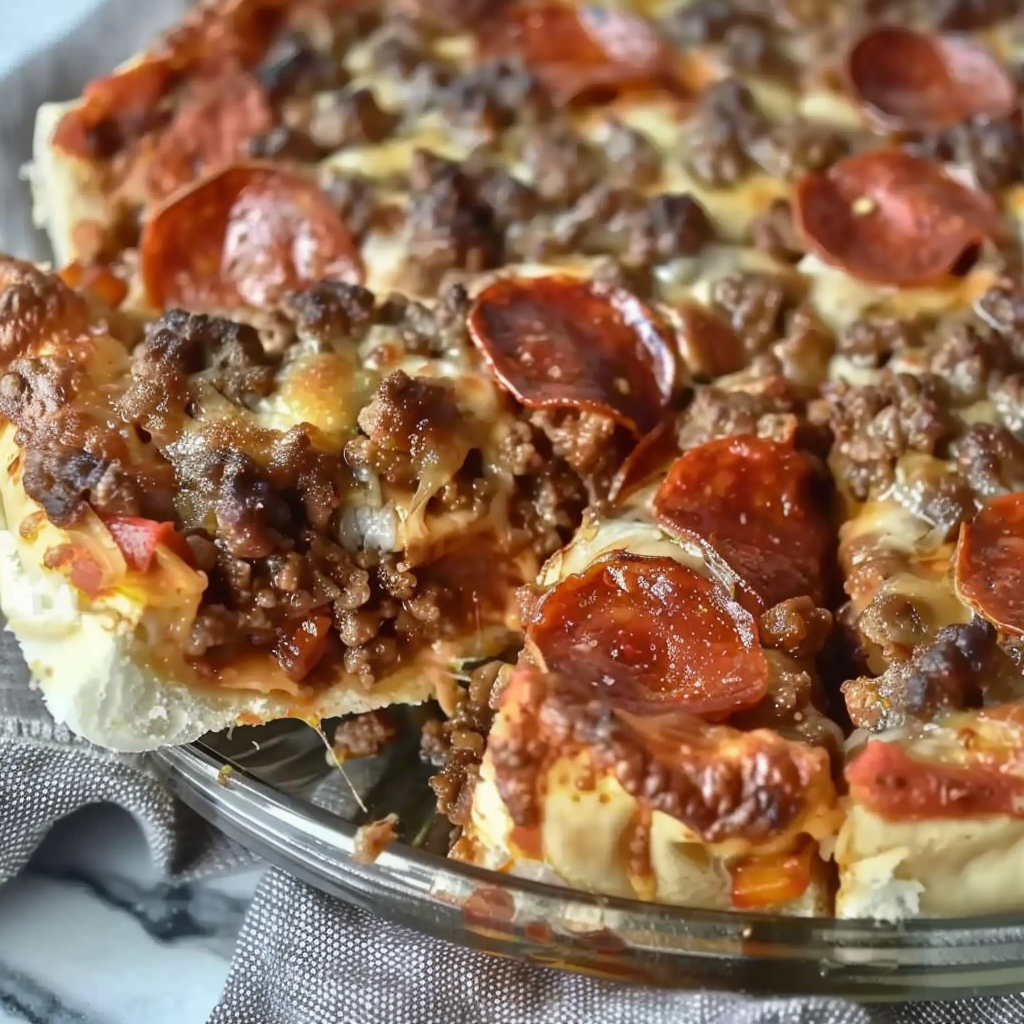
Sourcing & Smart Substitutions
One of the best things about deep dish pizza is how customizable it is. The core recipe works beautifully, but swapping ingredients lets you tailor the pie to your preferences.
-
Flour: Standard all-purpose flour works, but bread flour can produce a chewier crust. Some bakers add corn oil or butter to enhance richness.
-
Protein: Instead of ground beef, try Italian sausage for a spiced kick, lean turkey for a lighter option, or plant-based crumbles for a vegetarian-friendly pie.
-
Vegetables: Beyond peppers and mushrooms, options like olives, spinach, or roasted zucchini work well. Just make sure to cook and drain them to remove excess moisture.
-
Cheese: While mozzarella is essential for melt, provolone offers smoky flavor, and pecorino Romano provides a salty edge. Exploring Parmesan or other hard cheeses adds extra complexity.
-
Sauce: Some prefer chunky tomato sauce, while others enjoy smooth blends made from crushed tomatoes. If you’re adventurous, making your own base sauce with garlic, oregano, and basil delivers freshness.
Experimenting with these substitutions lets you create signature pies without compromising structure. Remember that moisture control is key—dry ingredients lead to taller, cleaner slices.
Nutrition & Dietary Notes
A traditional stuffed pizza pie is indulgent by nature, but you can adjust it to fit different dietary needs.
-
Portion control: Each slice is dense and filling, so serving smaller wedges balances enjoyment and health.
-
Lean proteins: Substituting ground beef with ground turkey or chicken reduces fat while keeping flavor.
-
Vegetarian option: Skip the meat entirely and increase mushrooms or spinach for a hearty, umami-rich filling.
-
Gluten-free option: Swap in a tested gluten-free flour blend. To strengthen the crust, consider par-baking before adding fillings.
The beauty of this dish is flexibility. With a few mindful adjustments, you can enjoy the comfort of a deep dish pie while aligning with personal dietary goals.
Step-by-Step Method (with Your Exact Recipe)
-
Make the dough: Combine flour, sugar, yeast, and salt. Add warm water and olive oil, mixing into a dough. Knead for 8–10 minutes, then let rise for 1 hour until doubled.
-
Cook filling: Sauté onion, garlic, bell pepper, and mushrooms until softened. Add beef, season, cook, and drain. Cool slightly.
-
Prep oven/pan: Preheat to 375°F. Grease deep-dish pan or springform.
-
Roll base: Divide dough into two, roll larger piece, and press into pan bottom and sides.
-
Layer: Add half mozzarella and Parmesan, half beef mixture, and half sauce. Repeat with remaining cheese, beef, and sauce.
-
Top crust: Roll smaller dough portion, place over filling, pinch edges, trim. Spread ½ cup sauce and sprinkle ½ cup mozzarella on top.
-
Bake: 35–45 minutes until crust is golden and cheese bubbles.
-
Rest: Cool for 10–15 minutes before slicing to keep layers intact.
Pro Techniques for Tall, Clean Layers
-
Drain meat and cook vegetables thoroughly to avoid excess liquid.
-
Cool fillings before layering so heat doesn’t soften the bottom crust.
-
Roll dough evenly to prevent thick corners.
-
Seal the top crust tightly around edges to contain fillings.
-
Bake on the middle rack for even cooking and crisp bottom.
-
After baking, run a knife around springform edges before releasing.
These steps ensure a pie that holds its form and slices clean every time.
Variations: Meat-Lover, Veggie Supreme, Spinach-Ricotta, Pepperoni-Mushroom
-
Meat-Lover: Layer Italian sausage, pepperoni, and beef for a bold, protein-packed pie.
-
Veggie Supreme: Pile on peppers, onions, mushrooms, and olives, roasting extra vegetables for depth.
-
Spinach-Ricotta: Add drained spinach mixed with ricotta between cheese layers for a creamy, earthy note.
-
Pepperoni-Mushroom: Classic comfort, but blot pepperoni slices first to reduce grease.
Each variation keeps the same structure but introduces new flavor dimensions.
Make-Ahead, Freezing, Reheating
-
Dough: Cold ferment for 12–24 hours for more flavor.
-
Par-bake option: Bake crust 8–10 minutes before filling if using wetter ingredients.
-
Freezing: Assemble unbaked pie, wrap well, and freeze. Bake from frozen with 10–15 extra minutes.
-
Leftovers: Refrigerate up to 4 days.
-
Reheating: Warm slices in oven or skillet at 350°F for 10–15 minutes. Avoid microwaving, which softens crust.
These methods make the recipe flexible for busy schedules.
Serving & Pairings
Serve wedges with:
-
Side salads like Caesar or simple greens.
-
Roasted vegetables such as broccoli or zucchini.
-
Drinks: Italian pilsner, Chianti, or sparkling water with lemon.
Pairings cut through richness and complement bold flavors.
Common Mistakes to Avoid
-
Not draining vegetables or meat → soggy crust.
-
Underbaking → pale, doughy center.
-
Skipping rest → slices collapse.
-
Overfilling → leaks and uneven bake.
Avoiding these errors guarantees a picture-perfect result.
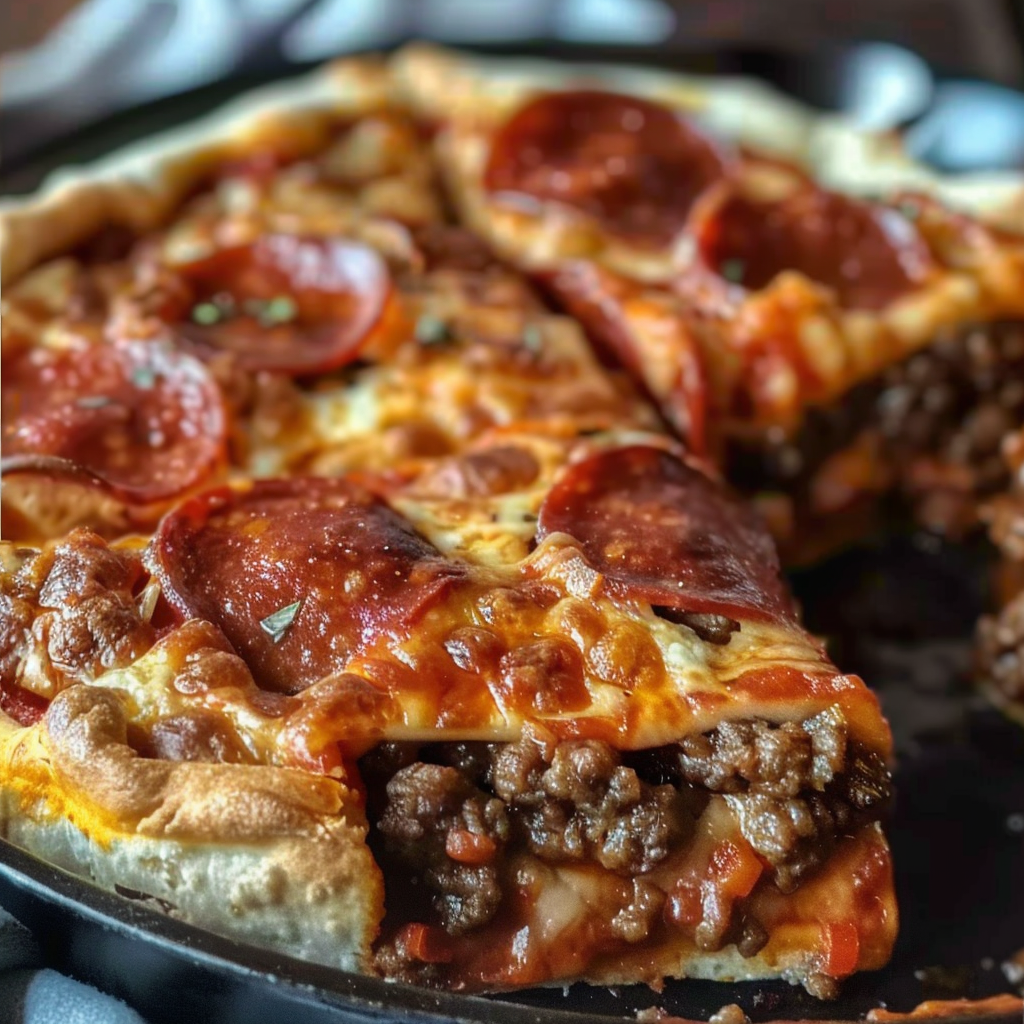
FAQs
What’s the difference between deep dish and stuffed pizza?
Deep dish uses one crust topped with sauce, while stuffed pizza includes a second top crust beneath the sauce.
Which pan is best?
Deep-dish pans and springform pans work well, while cast iron skillets provide extra browning.
How do I prevent a soggy crust?
Drain meat, cook vegetables, use low-moisture cheese, and consider a par-bake.
Can I use instant yeast?
Yes, add it directly to dry ingredients. Proofing time is similar to active dry yeast.
How long should it rest before slicing?
Let it sit 10–15 minutes for stable slices.
Can I freeze it?
Yes, both baked leftovers and unbaked assembled pies can be frozen. Reheat at 350°F until hot.
Deep Dish Pizza The Complete Guide to a Stuffed Pizza Pie with Layers
This deep dish pizza pie is a hearty, layered recipe featuring a buttery crust, molten mozzarella, savory beef and vegetables, and rich tomato sauce. It’s baked tall and golden, making it a show-stopping meal perfect for gatherings. The crust crisps beautifully while the inside stays gooey and cheesy, giving every slice that indulgent comfort Chicago made famous.
- Author: Clara
Ingredients
For the dough:
- 3 ½ cups all-purpose flour
- 1 tablespoon sugar
- 2 ¼ teaspoons active dry yeast
- 1 teaspoon salt
- 1 ¼ cups warm water (about 110°F)
- 2 tablespoons olive oil
For the filling:
- 1 tablespoon olive oil
- 1 small onion, diced
- 2 cloves garlic, minced
- 1 green bell pepper, chopped
- 1 cup sliced mushrooms
- 1 pound ground beef
- Salt and pepper, to taste
- 2 cups shredded mozzarella cheese
- ½ cup shredded parmesan cheese
- 1 ½ cups pizza sauce
For topping:
- ½ cup pizza sauce
- ½ cup shredded mozzarella cheese
Instructions
In a large bowl, combine flour, sugar, yeast, and salt. Add warm water and olive oil, then mix to form a dough.
Knead the dough on a floured surface for 8–10 minutes until smooth. Place in an oiled bowl, cover, and let rise for about 1 hour or until doubled in size.
In a skillet, heat olive oil over medium heat. Sauté onion, garlic, bell pepper, and mushrooms until softened.
Add ground beef, season with salt and pepper, and cook until browned. Drain excess fat and set mixture aside to cool slightly.
Preheat oven to 375°F and grease a deep-dish pie pan or springform pan.
Divide dough into two portions: one slightly larger than the other. Roll out the larger portion and press it into the bottom and sides of the prepared pan.
Layer half of the mozzarella and parmesan cheese into the dough-lined pan.
Add half of the ground beef mixture and spread evenly. Spoon over half of the pizza sauce.
Repeat with remaining cheese, meat mixture, and sauce.
Roll out the smaller dough portion and place over the top. Pinch edges to seal and trim excess dough.
Spread ½ cup pizza sauce over the top and sprinkle with ½ cup mozzarella cheese.
Bake for 35–45 minutes or until the crust is golden and the cheese on top is bubbly.
Let cool for 10–15 minutes before slicing and serving.
Notes
-
Always pre-cook vegetables and drain meats to avoid excess moisture.
-
Cold fermentation enhances dough flavor if you have extra time.
-
Let the pie rest before slicing for neat wedges.
-
Experiment with fillings—spinach-ricotta or sausage-pepperoni variations work especially well.
-
Use a springform pan for dramatic presentation, or a cast iron for a crisp bottom crust.
